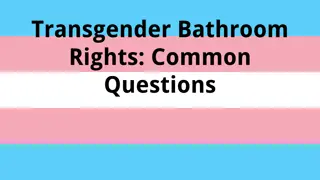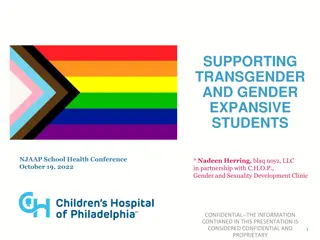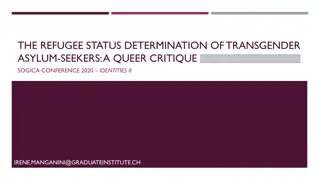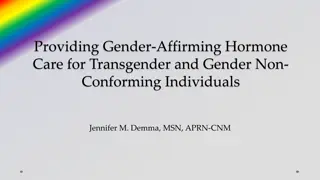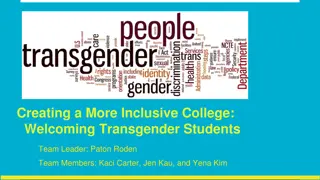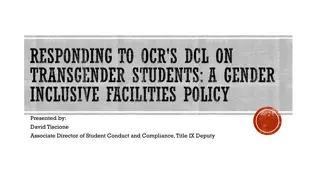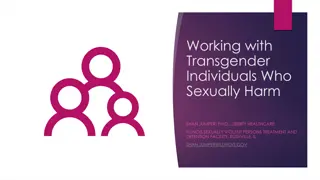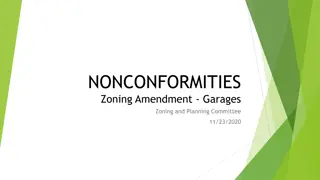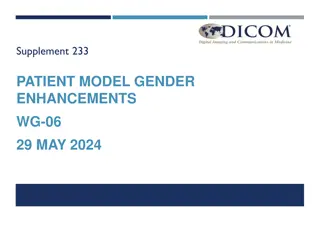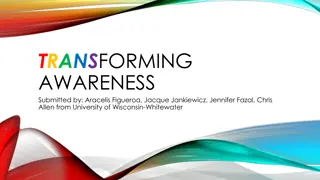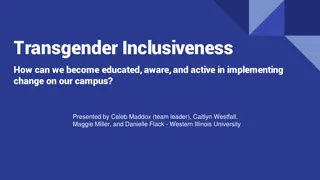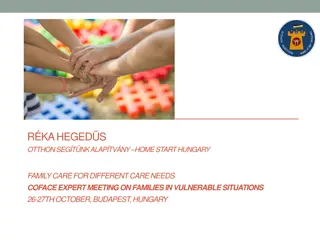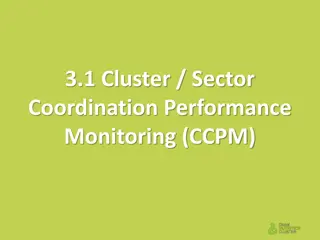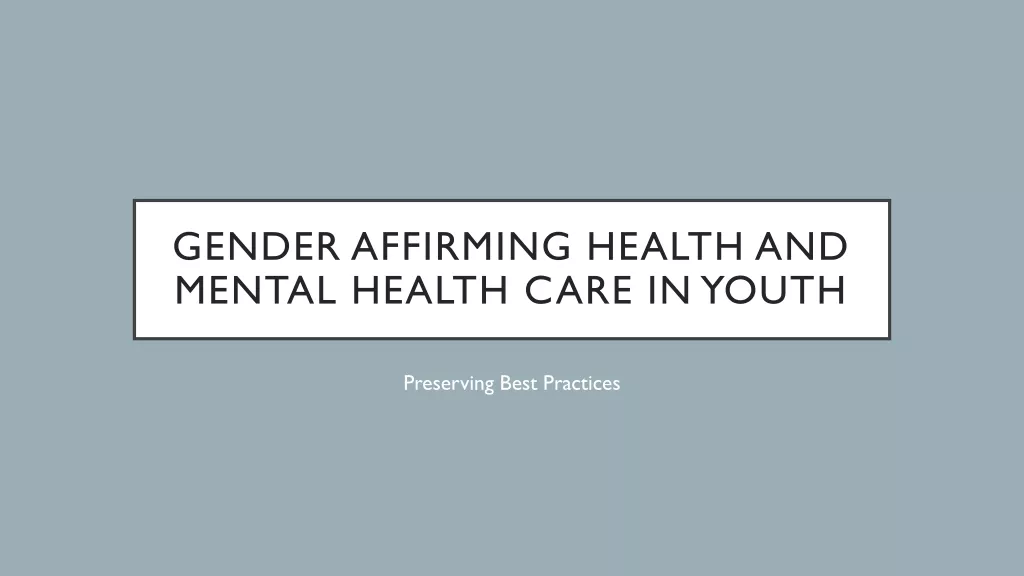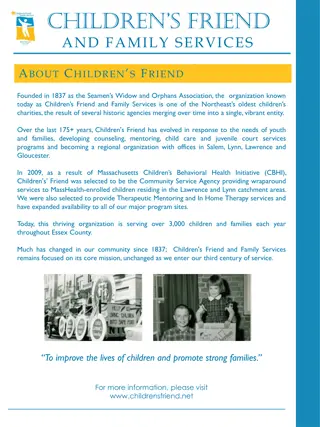Support Services for Transgender and Gender Nonconforming Children and Families by Susan Radzilowski, LMSW, ACSW
This presentation by Susan Radzilowski covers key terms related to transgender issues, examines risk factors affecting transgender youth, emphasizes the importance of family acceptance, discusses practitioner values and biases, and highlights the NASW's position against conversion therapy.
Download Presentation

Please find below an Image/Link to download the presentation.
The content on the website is provided AS IS for your information and personal use only. It may not be sold, licensed, or shared on other websites without obtaining consent from the author. Download presentation by click this link. If you encounter any issues during the download, it is possible that the publisher has removed the file from their server.
E N D
Presentation Transcript
Support Services for Transgender and Gender Nonconforming Children and Families Susan Radzilowski, LMSW, ACSW
About Me LEO Lecturer and Field Instructor; I teach SW790 12 in Winter: Social Work Services That Make a Difference: Meaningful Supports for Transgender Youth and Their Families Mother of someone who is transgender; this prompted my parallel journey back in 2005 Chair of NASW MI Chapter Ethics Committee Private Practice in Farmington Hills Michigan where I offer services to children who are TGNC and their parents (Susanradzilowski.com)
Overview This talk will offer a working definition of terms, including : Transgender, Gender Identity, Gender Expression, Intersex, Gender Nonconforming, Nonbinary, Gender Transition, and Ally. Language and terminology will be examined with emphasis on using affirming language and avoiding offensive terminology.
Overview (continued) Examine risk factors that impact transgender youth from a solution-focused lens so we can work to mitigate risks through advocacy and intervention. Ways to support family relationship dynamics, and strategies to increase family support, will be explored with an emphasis on increasing parental capacity to support transgender youth. Family acceptance is a protective factor that is associated with a decrease in transgender youth homeless and a decline in the frequency and severity of mental health issues and an increase in overall wellness.
The Importance of Practitioners Values (And Bias) An ally needs to have self awareness to be aware of implicit bias and to provide culturally sensitive care Cultural Humility informs practice Impact of Religious Freedom (legal vs. ethical) Erroneous Assumptions Transgender children can t be sure of who they are Gender-affirming healthcare is not appropriate for children Parents push their children to be transgender Let s not be affirming -- it s just a phase Reparative therapies hurt clients and are condemned by the NASW.
NASW Position on Conversion Therapy National Association of Social Workers (NASW) has issued a Position Statement entitled: Sexual Orientation Change Efforts (SOCE) and Conversion Therapy with Lesbians, Gay Men, Bisexuals, and Transgender Persons. NASW reaffirms its stance against reparative therapy and other sexual orientation change efforts (SOCE) designed to change sexual orientation or to refer clients to practitioners or programs that claim to do so. NASW condemns the use of SOCE or so-called Reparative Therapies by any person identifying as a social worker or any agency that identifies as providing social work services.
All About Language Basic Vocabulary from an affirming perspective Offensive vs. harmful words, expressions, and questions
Affirming Language & Definitions Transgender Multifaceted People self identify as a transgender. There is no one way to be transgender. Gender identity, internal sense of who I am is different from gender assigned at birth. TGNC acronym for Transgender Gender Nonconforming
The Definition of an Ally? According to Webster s New World Dictionary of the American Language, an ally is someone joined with another for a common purpose. The Gender Education Center defines allies to the GLBT communities as people who support us who may or may not be a part of our community. An ally believes in the human rights of all people. Demonstrates by their presence and actions, their acceptance and celebration of diversity among people. As SW, we need to be mindful of allyship to the TGNC community.
A Few More Definitions Gender A socially constructed system of classification that ascribes qualities of masculinity and femininity to people. Gender characteristics can change over time and are different between and among cultures. Nonbinary, Genderqueer A person whose gender cannot be accurately and/or fully defined by the terms, male or female. While a nonbinary or genderqueer person may also identify as male and/or female, many do not. Nonbinary or genderqueer people may or may not be transgender. Cisgender - A person who is not transgender. MAAB / FAAB male-assigned at birth / female-assigned at birth
Assigned sex / gender The sex / gender that was ascribed to a person at birth, which may or may not align with that person s true sex / gender. Gatekeeping The practice by which professionals (including social workers) have been empowered by the medical industrial complex, legal and government systems, and other members of society to decide the validity of a trans or gender nonconforming person s identity, and to authorize or deny necessary steps in transition. Transition The process by which a trans or gender nonconforming person makes medical, legal, and/or social changes in order to affirm their gender identity and/or to alleviate dysphoria. Gender Expression the way that a person uses appearance, mannerisms and other personal traits to communicate their gender. Gender expression can be any combination of traditional masculine, feminine, and androgynous traits
Binary gender system / the gender binary The social construct of two specific and exclusive categories of gender: masculine men who are physically male, and feminine women who are physically female. Affirmed gender The gender a trans person s self-identified gender. Gender pronouns / personal pronouns She/her/hers, he/him/his, they/them/theirs, ze/hir/hirs, etc. - Terms to substitute a person s name, that (in English) usually denote gender. Gender-neutral pronouns should be used for any individual who requests them. Gender nonconforming A person whose gender identity or expression does not conform to societal ideas about what a man/boy or woman/girl should be like.
Gender /body dysphoria extreme discomfort or distress due to being misgendered or an unmet need for gender-affirming medical care. This experienced is pathologized in the DSM; gender dysphoria is a prerequisite diagnosis for individuals in need of gender-affirming medical care. Queer A term with 3 meanings: (1) A hurtful slur used to degrade LGBTQ people. (2) A more inclusive term for any person who is not both heterosexual and cisgender, but who may not identify with any other existing label in the alphabet soup. (3) A reclaimed and celebratory term Gender Fluid A person whose gender identity shifts and changes over time. Gender fluid people may sometimes feel male, and other times feel female, but gender identities experienced by gender fluid people are not limited to the binary.
What Is Intersex & How It Differs From Transgender a set of medical conditions that feature congenital anomaly of the reproductive and sexual system. Intersex people are born with "sex chromosomes," external genitalia, or internal reproductive systems that are not considered "standard" for either male or female. Secrecy, shame, and lack of agency over one s own body are shared experiences by people who are intersex and TGNC. https://www.youtube.com/watch?v=cAUDKEI4QKI&t=120s
What does is mean to when children gender expansive or gender creative, gender diverse? Gender Expansive: Umbrella term used for individuals that broaden their own culture s commonly held definitions of gender, including expectations for its expression, identities, roles, and/or other perceived gender norms. Gender-expansive individuals may include those with transgender and non- binary identities, as well as those whose gender in some way is seen to be stretching society s notions of gender. Children who do not conform to their culture s expectations for boys or girls. Being transgender is one way of being gender-expansive, but not all gender- expansive children are transgender!
How do Social Workers Intervene with Children & Families? Role of the SW with: The child The parent or caregiver The family unit Advocating & educating with schools and other community entities Providing services to young children and teens in the context of the family is a paradigm shift that helps families resolve conflict and stay together. This method of service delivery yields significant for everyone and leads to improved outcomes the the child across all domains! Best Practice for TGNC children and youth is to provide Gender Affirming Care (more on this later)
Conducting a Culturally Sensitive MH Assessment What is involved in a culturally sensitive mental health assessment? Which questions are relevant? Which are irrelevant? Harmful? How do we determine when and how to ask questions about trans people s bodies? Short answer: Don t! Unless directly relevant to a service you are actually providing. Education helps to ensure that our questions are culturally sensitive, respectful and not overly invasive!
Basics of a Culturally Sensitive Assessment Use affirming language Remember to be aware of any implicit bias to guard against allowing bias to influence your work Don t out your client unless you have their consent Understand how gender dyphoria can mimic and/or exacerbate other MH issues such as depression and anxiety When interviewing, use gender affirming language (and gender neutral) and on forms Normalize your client s experience to reduce feelings of shame Connect with others to reduce isolation
Assessment Criteria When Working with Children Consider/rule out other MH issues. Assess for trauma, suicidal ideation, depression (not related to gender dsyphoria) Gender expansive / creative or transgender? How to know? Remember, a child who is gender expansive is not necessarily a trans child! Look for: Insistent, Consistent, Persistent. Remember, young children may communicate more with behavior than words. Affirmative therapy Listen to the child. Take the child s lead. Remember, social transitions are completely reversible (more on social transition later).
Assessment (Part 2) For children approaching puberty, medical monitoring is needed to avoid the child going through the wrong puberty Be aware of elevated risk of MH issues in TGNC but also know that studies show trans children who are affirmed have similar outcomes to cisgender children according to the Family Acceptance Project. Social issues and/or School advocacy awareness and advocacy is key.
High Suicide Attempt Rate and Other MH Issues 40 percent attempt rate MH status is adversely impacted by rejection, oppression, isolation, internalized transphobia What is internalized transphobia? Feelings of self hatred of shame some TGNC people that they might not even be aware of. It is the result of discrimination, ignorance and stigma in society against people who display gender non-conforming behavior. Remember: Children who are accepted have MH outcomes similar to their cisgender peers.
Other Risk Factors Increased incidence of MH issues including 40 percent suicide rate Bullying Homelessness Family / Caregiver and Peer rejection Isolation Criminalization Medical neglect Dating violence and abuse
Protective Factors Parental behavior accepting even small changes help Social groups (such as Gay Straight Alliances - GSAs) to reduce isolation Gender affirming care An adult role model who is trans (gives a sense of hope) Trans representation in society, movies and television, and in school lessons Being able to transition in ways that affirm the youth s gender
Working with Parents / Caregivers Coaching parents about the impact of parent responses to transgender children s identity and the impact on the child. What are rejecting behaviors? What are accepting behaviors? Ideally we want to help parent move from acceptance to celebration. Some of the greatest allies for TGNC children are moms and dads!
Common Parent Concerns Feelings & Fears for their child s health and safety Expenses of gender affirming care Custody Threats and/or CPS (Safe folder) Doubts: Am I making the right decision? Letting go of the child they thought they had; welcoming their TGNC child Telling Others The 2 minute explanation, the test Will I be a grandparent?
Safe Folder The contents of your folder are essentially a road map of your child s life. The folder will provide the reader with the history and facts needed to understand your child s gender identity and your family stability. It will also provide supporting education for those who may not understand how gender identity is developed or how it can differ from assigned birth sex. You should keep two identical copies of your Safe Folder. One copy should remain in your home and the other copy in a safe place away from your home in case of fire, flood, etc. Both copies should be consistently updated with new items.
What is in a Safe Folder? A letter from your pediatrician/general practitioner confirming your child s gender identity. A letter from your child s therapist/counselor confirming your child s gender identity and confirming the stability of your family. A letter from any other healthcare professionals that your child is involved with confirming your child s gender identity. Letters from at least three (3) friends, family members or your pastor/minister that confirm your child s atypical gender behaviors and testimony of your parenting abilities.
What is in a Safe Folder? (2) Letters in prior slide should state how they know you, the length of time they have known you and the pattern of atypical gender behaviors that they have witnessed with your child, along with current contact information for the writer. Drawings or writings from your child that display their gender identity. Videos or snapshots of your child displaying atypical gender behaviors. (Chronological order; new pictures added every six months or more frequently as significant developmental changes happen for the child) Legal Documents. (copy of birth certificate, passports, social security cards and name change documents if applicable)
Importance of Affirming Behaviors Remember Children whose gender is affirmed have MH outcomes similar to their cisgender peers. Even small behavior changes help. When working with parents, focus on behavior, not beliefs. Harness their love for their child. Many rejecting parents honestly believe they are working on their child s best interests.
What do affirming behaviors look like? Examples of Affirming Behaviors: Using child s affirmed name and pronouns obtaining gender affirming care allow child to connect with transgender peers standing up for child with family and others who do not accept child s gender What else can you think of?
Rejecting behaviors: Rejection of child s affirmed name and pronouns Trying to keep child from transgender peers Denying access to clothing that reflects gender identity Taunting, blaming, or shaming child Conversion Therapy Sending mixed messages
What would you do? A mom has expressed support for her child s gender transition from female to male. A family wedding (in a conservative church) has been planned and the extended relatives are not aware of the child s gender transition yet. Mom asks her trans son to wear a dress so his grandma won t feel upset and spoil the party . She is also afraid that the church members will not understand. Which aspects of this scenario are accepting? Rejecting? As the SW what would you do?
Parent Education & Coaching Behavior is important -- not beliefs Teach, don t judge! Small changes in behavior matter Focus on safety, wellness, common goals, and universal hopes and dreams Using science and the literature to inform and support
Transgender and Faith Parents and youth are hungry for information on reconciling trans identity and faith. One resource is Austen Hartke is the creator of the YouTube series Transgender and Christian, which seeks to understand, interpret, and share parts of the Bible that relate to gender identity and the lives of transgender individuals. Austen Hartke is a Transgender person of faith with a passion for helping other trans and gender-non-conforming people see themselves in faith communities. For more information, check out the Trans Faith Resource List on his website Austenhartke.com
Social Transition Often the first step Home, school, community (bathroom access) Parents, SW, Child develop a plan Part of an affirming model of care (vs. watchful waiting or conversion ) Name, pronouns, hair, binding, gender based clubs
Legal Transition Identity documents School Transcripts Driver License Young children often use an affirmed name with no legal name change during social transition. SW, teachers, and other providers should honor this.
Medical Transition May include some combination of the following: Hormones Hormone blockers Gonadotropin-releasing hormone analogs such as leuprolide and histrelin. These are given in early adolescence and are reversible Facial feminization surgery Chest reconstruction surgery Other gender affirming surgeries Access is an issue, often due to cost of procedures not being covered by health insurance.
A Few Minutes with Dr. Johanna Olson https://www.youtube.com/watch?v=jjtRJsC16HE
What is Watchful Waiting? A harmful strategy that promotes Delayed Transition: Prolonging Dysphoria Certain clinicians, along with non-expert critics of transgender advocacy, have taken a position that they describe as watchful waiting. They contend that most children with gender dysphoria do not become transgender adults and, therefore, early social transition may be unnecessary, even harmful. They advocate waiting until adolescence, or even adulthood, to permit any type of gender transition.
Gender Affirming Care Highly individualized there is no One right way Goal: give the child an opportunity to live in the gender that feels most real or comfortable to that child [...] with freedom from restriction, aspersion, or rejection. Gender-affirmative approaches follow the child s lead. Medical and mental health professionals assist families (and, often, a child s school community) in becoming comfortable with the child s gender expression. This is the standard of care.
What Can You Do? Make a commitment to be informed so your clients are not burdened by having to educate you Use affirming language Be an advocate in your agency and community Take advantage of teachable moments to teach (not judge) when working with parents. Remember, they have few role models or parenting guides Advocate for access to gender affirming care across systems


